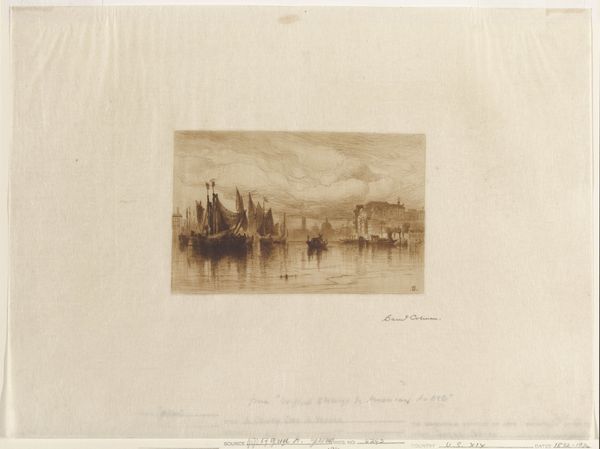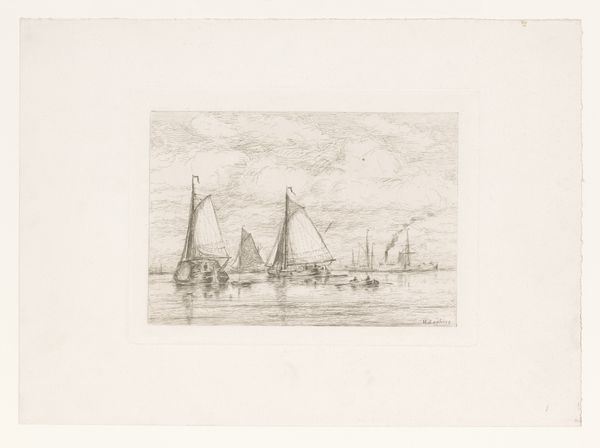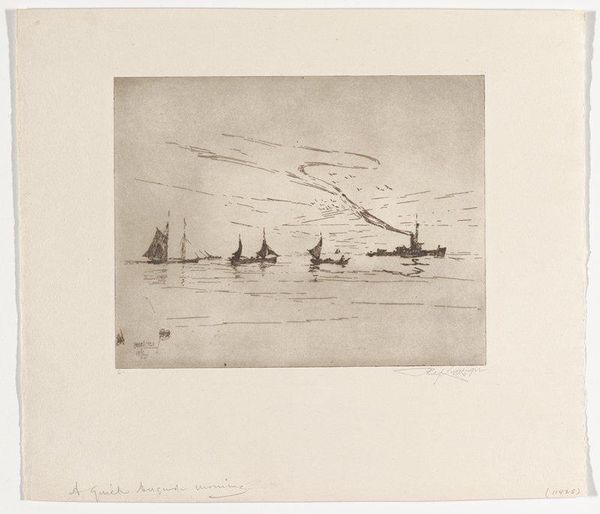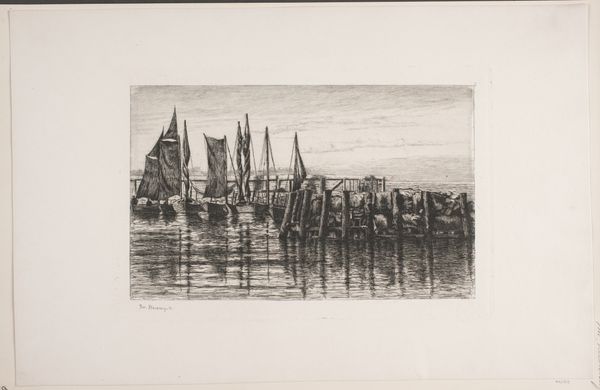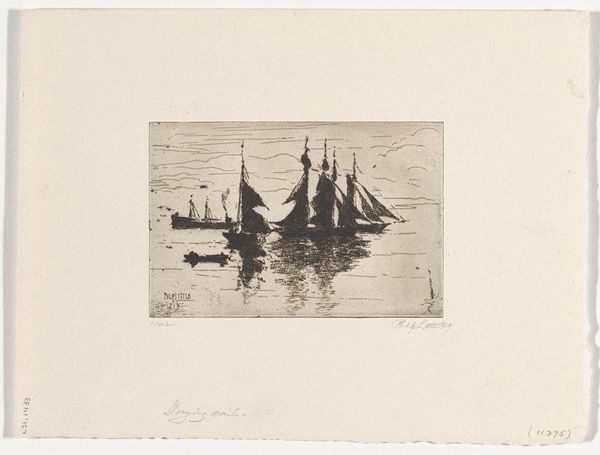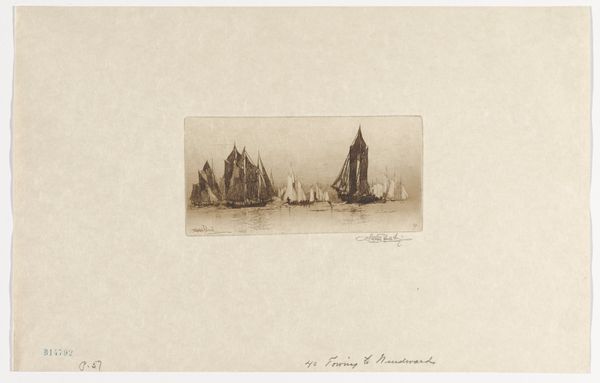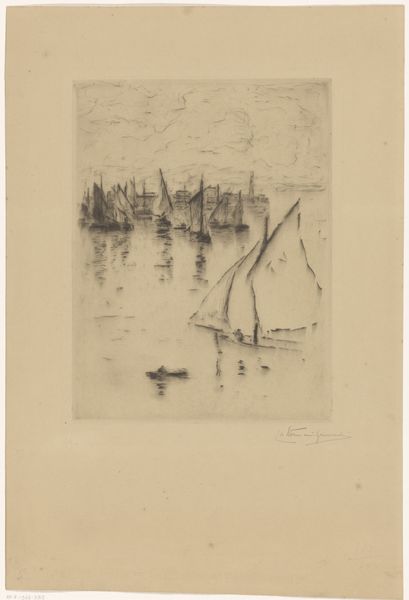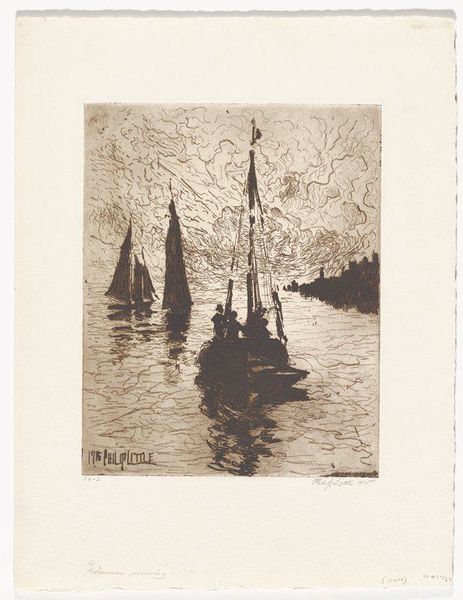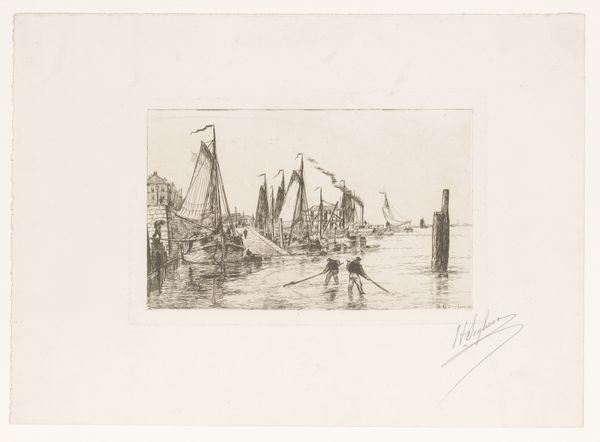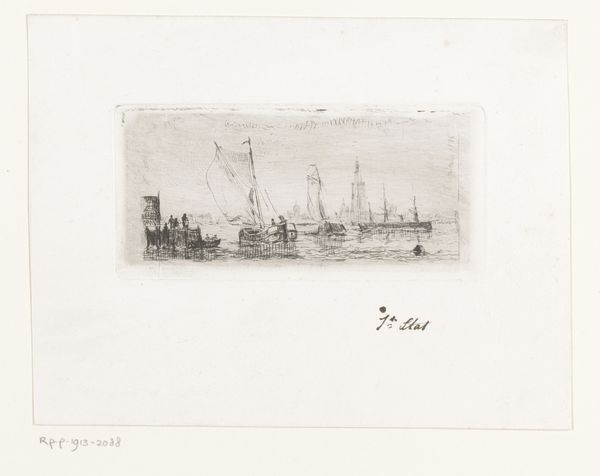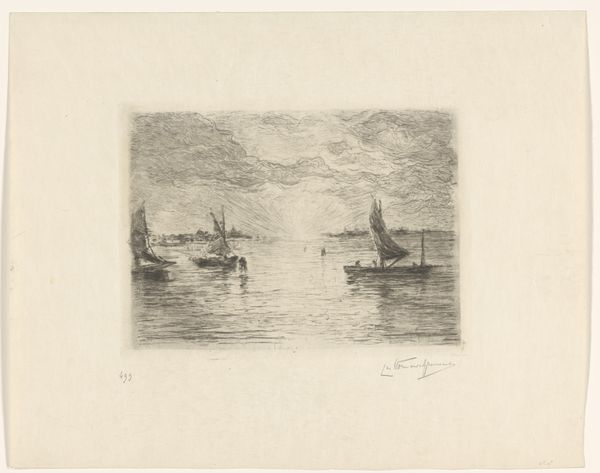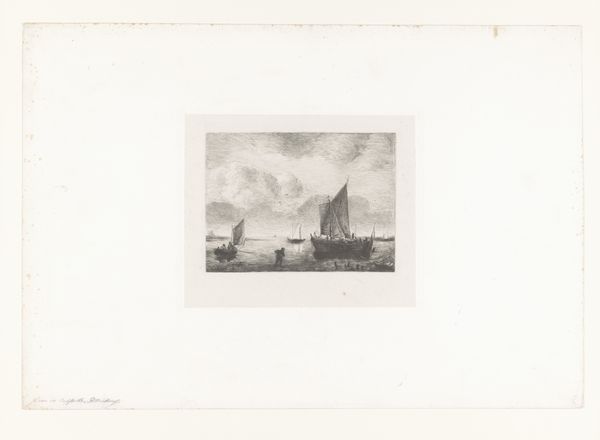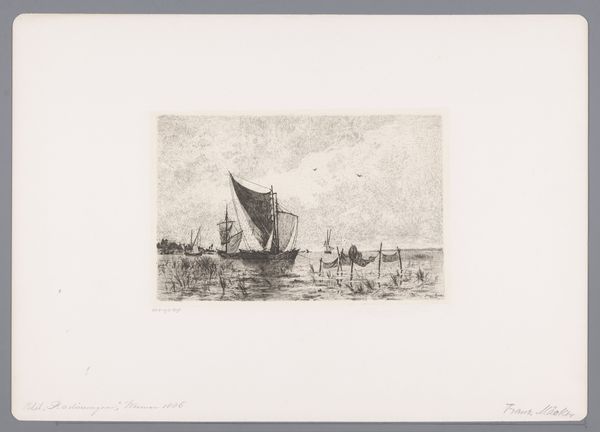
print, etching
# print
#
etching
#
landscape
#
etching
#
realism
Dimensions: 7 7/8 x 11 7/8 in. (20 x 30.16 cm) (plate)12 15/16 x 16 in. (32.86 x 40.64 cm) (sheet)
Copyright: No Copyright - United States
Editor: So this is "Coasters," an etching made by Philip Little in 1915. It feels really tranquil, almost meditative, watching those sailboats just sitting on the water. How do you interpret this work? Curator: It's evocative, isn't it? Considering its historical context – 1915, in the thick of the first World War – this image offers an interesting counterpoint to the dominant narratives of the time. Editor: A counterpoint? How so? Curator: Think about it: while Europe was engulfed in conflict, Little depicts a scene of almost idyllic stillness. This contrast begs questions about the role of art during wartime. Is it escapism? A form of quiet resistance? Or a commentary on the stark differences in lived experience based on geography and social positioning? The coasters, these working boats, also invite reflection. Who were these boats for? What purposes did they serve? How did industrial changes on the sea change or reinforce the dominant social order? Editor: I hadn’t thought about it in terms of war or class dynamics. Curator: Exactly. And the etching technique itself adds another layer. The fine lines, the delicate rendering of light on the water, speaks to a certain nostalgia. A yearning for simpler times, perhaps? Editor: So you're saying the peace in the picture becomes more loaded knowing the world outside the picture? Curator: Precisely. It’s a reminder that even moments of apparent serenity are shaped by broader socio-political currents, reflecting varying perspectives of class, power, and historical moment. Editor: Wow, I will never look at a peaceful seascape the same way. It gives you so much to think about. Curator: That’s the power of art: not just to show us beauty, but to make us question the very nature of beauty itself, within historical and cultural contexts.
Comments
No comments
Be the first to comment and join the conversation on the ultimate creative platform.
